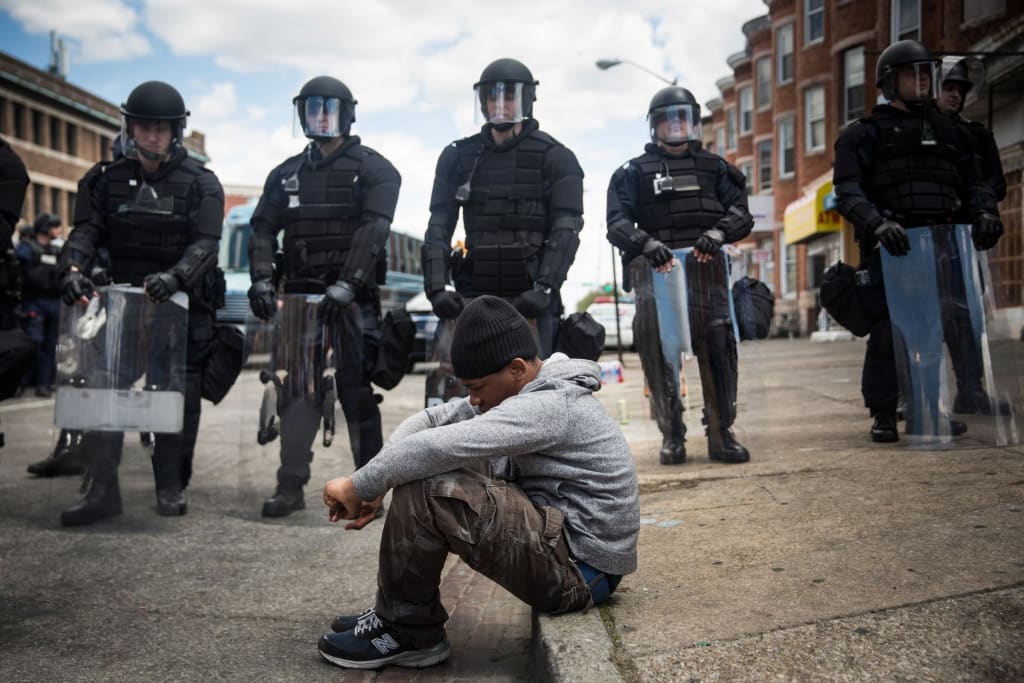Content warning
This story may contain sensitive material or discuss topics that some readers may find distressing. Reader discretion is advised. The views and opinions expressed in this story are those of the author and do not necessarily reflect the official policy or position of Vocal.

In the fall of 2022, 100 interview was conducted across New York, Seattle, Chicago, and Philadelphia. Hanna Love, who researches cities and public safety at the Brookings Institution, noted that the predominant concern among respondents was the fear of crime in downtown business districts. It was two years into the pandemic, amidst a period perceived as an explosion of crime in America. Headlines declared, “Crime spiking on the streets,” “cities across the country grapple with crime,” “crime has increased,” “nationwide spike in violent crime,” “violent crime in the US is rising,” and “homicides increased by 36%.”
However, the narrative has since become more nuanced. Some reports indicate that crime is decreasing, while others still paint a grim picture: “Crime is turning cities into war zones,” “FBI is underreporting,” and “random acts of violence.” A significant majority of Americans, about two-thirds, believe that crime in the US is a very or extremely serious problem, with over three-quarters thinking that there’s more crime now than a year ago. So, which is it? Is crime increasing or decreasing? And if it's on the decline, what do most Americans actually perceive about crime rates?
To answer these questions, I started by asking my colleague Abdallah. Abdallah Fayyad, a policy correspondent at Vox, explained that we rely on two main sources for crime statistics: the FBI crime database, which compiles voluntary crime data reports from law enforcement agencies across the country, and the National Crime Victimization Survey, a federal initiative that directly surveys people about their experiences with crime. Each has its limitations—the survey covers around a quarter of a million people, a small fraction of the population, and the FBI’s data includes only crimes reported to the police. This is why the FBI’s homicide data is so widely cited; murder is almost always reported.
Examining data from 2019, and adding 2020 data, shows a spike in homicides. This surge contributes to the perception of rising crime. However, experts suggest contextualizing this spike within the broader trend of the '90s crime decline. Extending the data to 2023 reveals that the spike appears temporary and is now trending downward, although not yet back to pre-pandemic levels. A similar trend is observed with broader violent crime and property crime rates, which are also declining in most places.
Despite this, 77% of Americans believe crime is increasing. Polling by Gallup, which has tracked public perception of crime for about 35 years, indicates that most Americans consistently believe crime is worse than the previous year, even during periods when crime was actually declining. Moreover, while two-thirds see crime as a serious national issue, far fewer believe it's a serious problem in their own neighborhoods, suggesting that people generally feel safe locally but perceive a broader, abstract crisis of crime.
Hanna's research delved into specific fears, particularly concerns about random downtown violence. Yet, geographic analysis of crime data in cities like Chicago and New York shows a mismatch between perception and reality. For instance, the increase in gun deaths in Chicago in 2020 was largely confined to disadvantaged neighborhoods, not downtown. In New York, violent crime in bustling areas increased only marginally compared to the rest of the city.
So, why do people think downtowns are so dangerous? Media coverage is one reason, as headlines often highlight violent incidents in prominent areas, overshadowing the more persistent community violence in less affluent neighborhoods. Interviews also revealed that people often conflated crime with visible homelessness and addiction, which became more noticeable as the pandemic reduced the number of office workers and tourists in downtown areas.
Post-pandemic, the visibility of homelessness and addiction increased, partly due to cuts in social services. For example, New York State had 20% fewer psychiatric beds by 2022 compared to 2014, and the number of people experiencing unsheltered homelessness rose by over 20% from 2019 to 2023. These changes can make cities feel less safe, but data shows that equating vulnerable populations with crime is a misconception.
Politicians and policymakers often respond to perceptions rather than data, leading to initiatives like sending the National Guard to patrol New York City subways, despite declining crime rates there. Such perception-based policies can divert resources without addressing actual crime trends, resulting in measures like harsher penalties for minor crimes and welfare requirements that don't tackle the root causes of crime.
Addressing public perception is challenging. Telling someone that crime is decreasing when they've experienced or witnessed crime firsthand is difficult. As the chart shows, which of these clips resonates more: “Last year, the murder rate saw the sharpest decrease in history. Violent crime fell to one of its lowest levels in more than 50 years,” or “The defund-the-police Democrats have turned our once-great cities into cesspools of bloodshed and crime”?
In April 2024, an ABC News poll found that voters trust Donald Trump over Joe Biden on crime and safety by an eight-point margin. Even if the homicide rate continues to fall to historic lows, the challenge will be convincing the public that things are indeed improving. This challenge underscores the complexity of addressing crime in America, where perception often overshadows reality, and where a nuanced understanding is crucial to informed policymaking and community safety.
About the Creator
Enjoyed the story? Support the Creator.
Subscribe for free to receive all their stories in your feed. You could also pledge your support or give them a one-off tip, letting them know you appreciate their work.





Comments
There are no comments for this story
Be the first to respond and start the conversation.